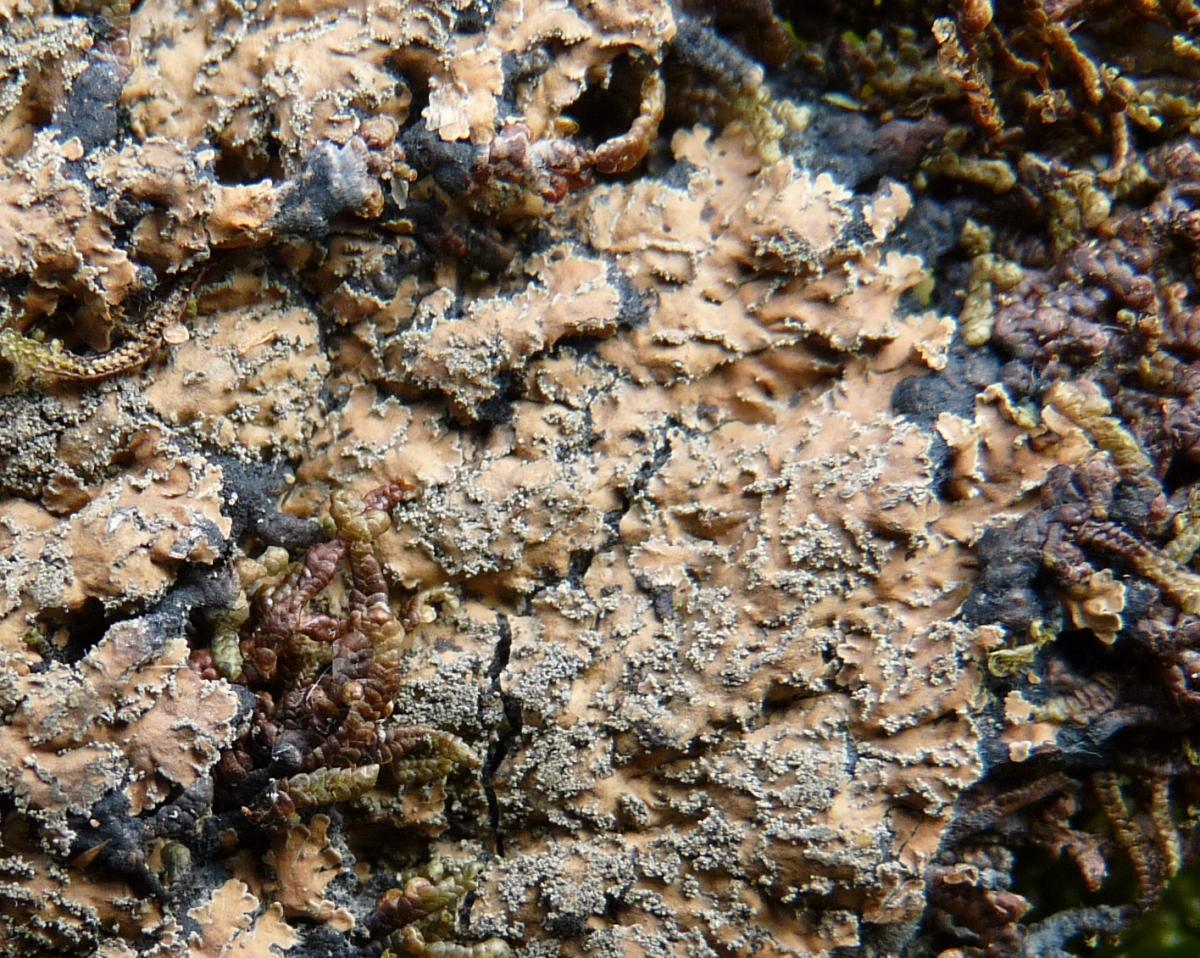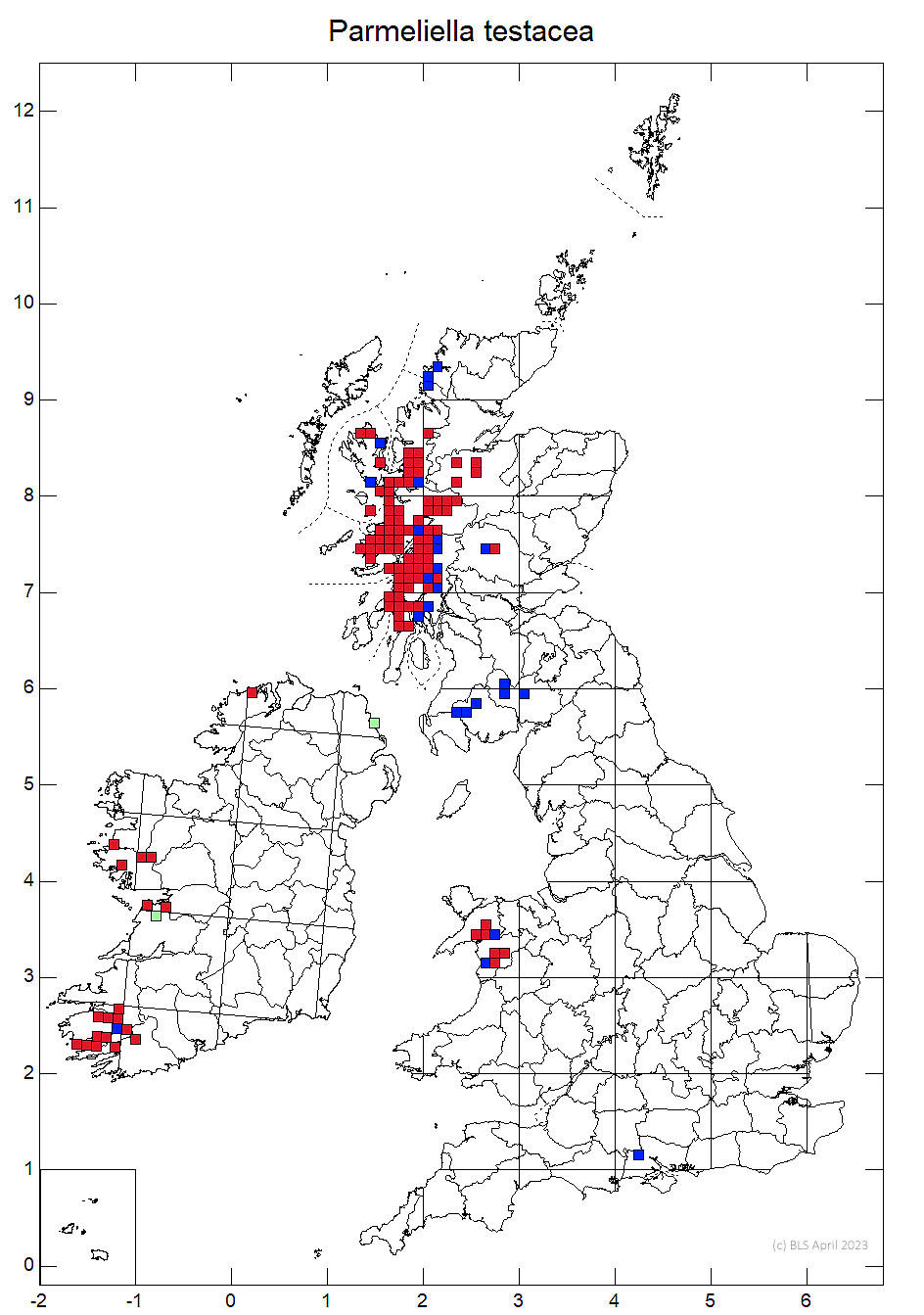As with other lichens in the Pannariaceae this species with cyanobacteria as the photosynthetic partner usually has a distinctive blue-black rim to the thallus (called the hypothallus). It, however, barely extends out from the edge of the thallus in this species. The centre of the thallus consists of chestnut to grey brown lobes that become quite elongate towards the edge. These squamules break down to initially form similarly coloured knob-like soralia that in turn develop into extensive patches of blue-grey soredia that can cover most of the thallus. When fresh and moist it can be separated from most other species by its distinctive hospital disinfectant smell. P. triptophylla has more elongate isidia and smaller marginal squamules. Fuscopannaria sampaiana has cream-coloured soralia (not blue-green). (RGW)

Photo: Ray Woods
It occurs on the basic bark of trees in moist, sheltered and unpolluted woodlands and occasionally on silty boulders in mountain streams (Pentecost (1987)).
Very rare in Wales with records from SH54, 61 and 74 in the Snowdonia National Park. It has probably been recently lost from England with former sites in the New Forest and North Somerset (Rose and Coppins (1999)). It is locally frequent in the Western Scottish Highlands and rare in SW Scotland. It is uncommon in SW Ireland. Elsewhere it is found in Western Norway, North Spain, Portugal, Macronesia and in the Pyrenees, the South of France and in Northern Italy. (RGW)
We know little of the detailed distribution and population sizes of this species in Wales. It is threatened by acidic atmospheric pollutants, the loss of host trees by felling and natural collapse and a lack of nearby suitable host trees onto which to expand. The complete cessation of grazing in some sites may lead to its loss through being shaded out by dense evergreens such as ivy, holly and rhododendron. It is accorded a threat status of vulnerable in Wales though a better understanding of its population size and trends in abundance might indicate that endangered is a more realistic status. In Britain it is considered to be near threatened. British populations are considered to be of international importance. (RGW)
Rose, F and Coppins, BJ (1999).Parmeliella testacea. Species account 1031/1999 in the Lichen Atlas of the British Isles. British Lichen Society, London.
- Log in to post comments

